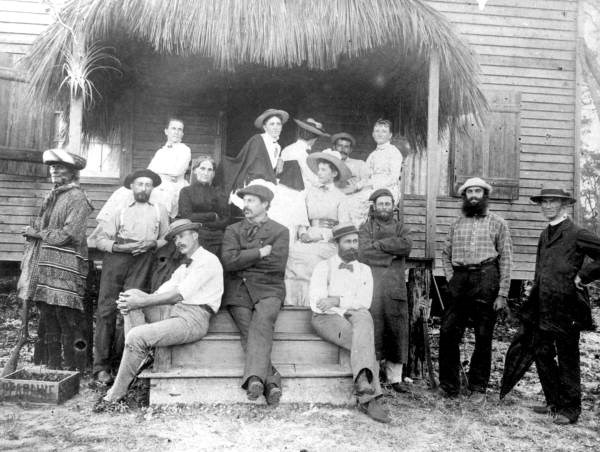
Florida Memory (RC03257, public domain)
Road Improvements Open the Everglades to More People
Animals and plants of the Everglades benefitted from their isolation from most people, until road improvements and a population boom around 1900 increased access to their habitats. Meanwhile, fashion trends led hunters to kill birds for feathers to sell to hat makers. Collectors roamed the Everglades harvesting beautiful exotics such as orchids and tree snails.In what is called the Progressive era of American history in the late 1800s and early 1900s, women worked nationally and locally in many conservation and reform causes. From the preservation of the giant sequoias of California to the royal palms of Florida, women played a critical role.
The story of Royal Palm State Park begins with the protection of wildlife. Around 1900, demand peaked for feathers from wild birds to satisfy the fashion craze of plume-adorned women's hats. The devastation of bird populations for the sake of fashion spurred activists to the need for reform. Early Florida conservationists organized the Audubon Society of Florida in an effort to save wild birds. A passionate advocate for plumed birds, Mary Barr Munroe gave "bird talks" throughout the state, deputized village boys as “Bird Defenders,” wrote news articles, and even harassed milliners (hat makers) and women who wore plumed hats. She was the founder of the Coconut Grove Audubon Society and the third president of the Woman's Club of Coconut Grove. She served three non-consecutive terms.
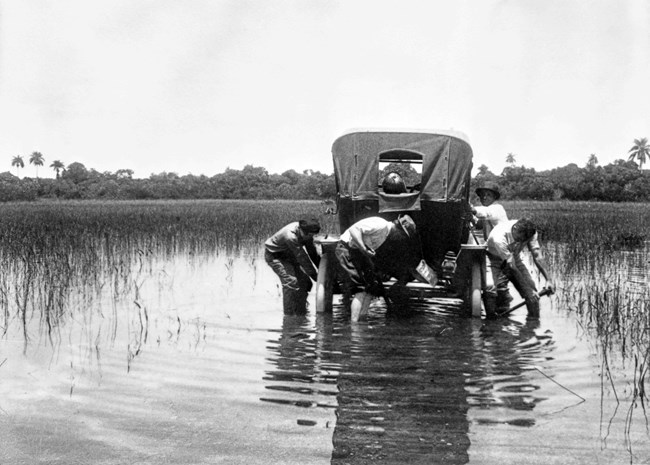
John Kunkel Small collection, Florida Memory (SMX0106, public domain)
Prior to the establishment of Royal Palm State Park and the completion of Ingraham Highway, navigating through the Everglades was difficult, as this photo taken on the edge of Royal Palm Hammock reveals. The photographer, John Kunkel Small, was a prominent botanist who is known for his studies of tropical plants.

May Mann Jennings Papers, George A. Smathers Libraries, University of Florida (UF00091257-6)
View looking east from Paradise Key toward Pine Island prior to the completion of the Ingraham Highway to Paradise Key in 1916.
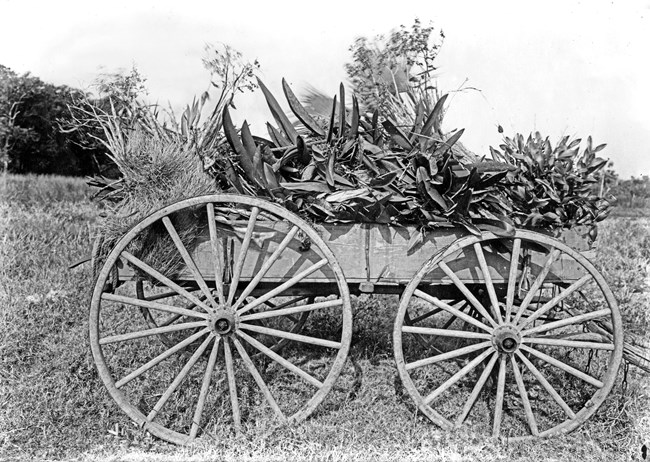
John Kunkel Small collection, Florida Memory (SM0228, public domain)
Access Leads to Exploitation of Plants and Animals
Thousands of orchids were taken from hammocks throughout the Everglades and sold. This 1916 image shows a wagon load of orchids brought from Snake Hammock near Coot Bay.
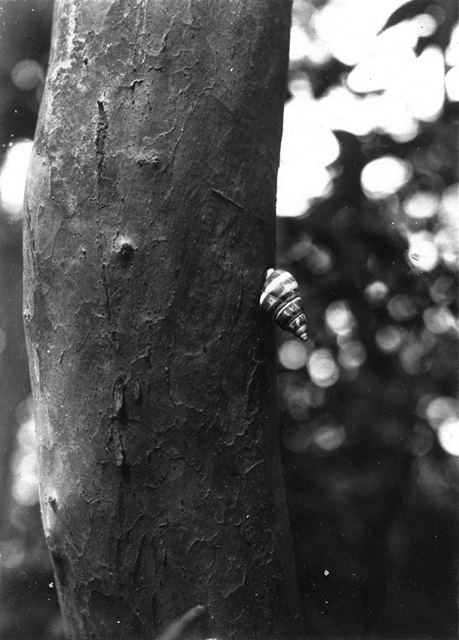
May Mann Jennings Papers, George A. Smathers Libraries, University of Florida (UF00100303-2)
Liguus fasciatus, Florida tree snails, were taken by collectors and are now a protected species. The shells are referred to as “living jewels” due to their vibrant colors.
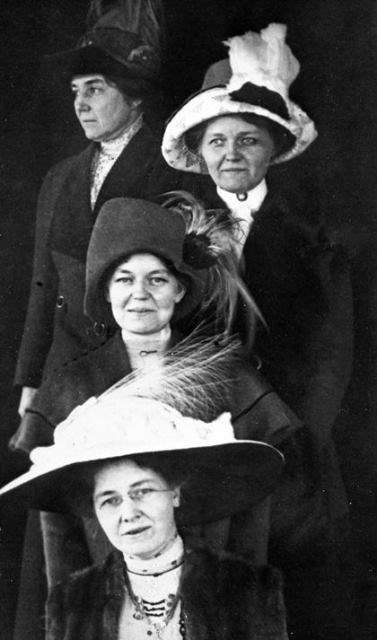
These ladies were photographed in the 1890s wearing a variety of hats decorated with bird feathers called plumes. The woman in the foreground is wearing plumes from an egret. The third woman up appears to have an ostrich feather in her hat.
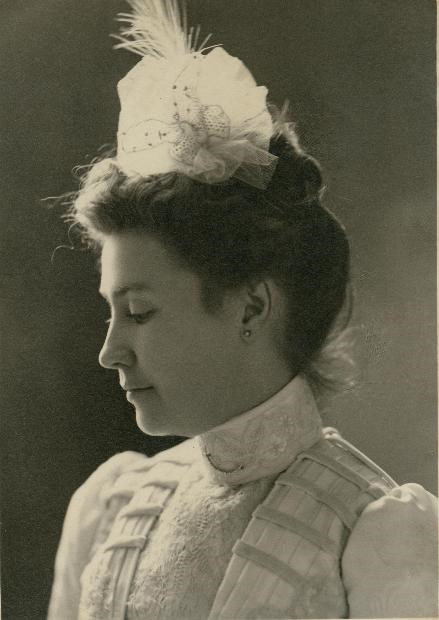
May Mann Jennings Papers, George A. Smathers Libraries, University of Florida (UF00091239-8)
Although Mrs. Jennings (1872-1963) openly spoke out against the plume hunting industry, when she was younger she too wore plumed hats. This image shows May Mann Jennings in 1901. In the following years Jennings changed her view on plume fashion and supported conservation efforts and the Audubon Society.
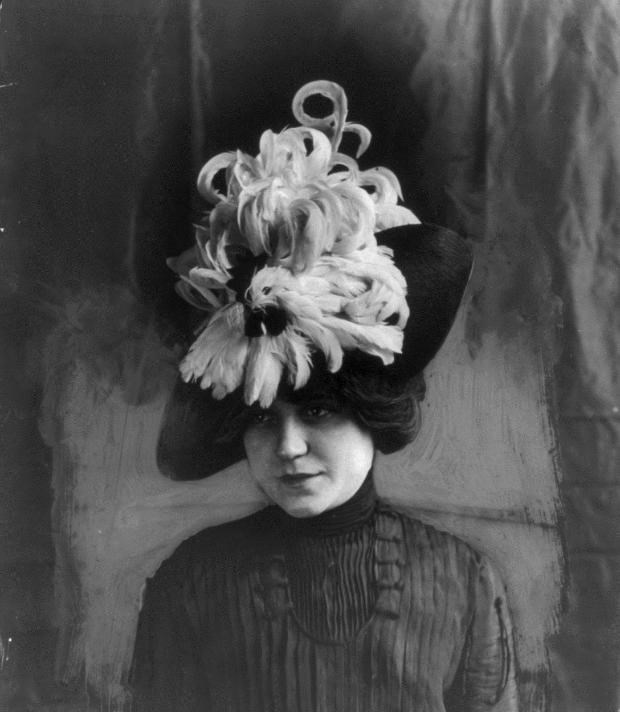
Library of Congress (LC-USZ62-61248)
Plumed hat design varied from fairly simple to extraordinarily elaborate. Although this hat from 1912 does not appear to contain any feathers from south Florida birds, it does serve as an example of how over the top these hats could be.
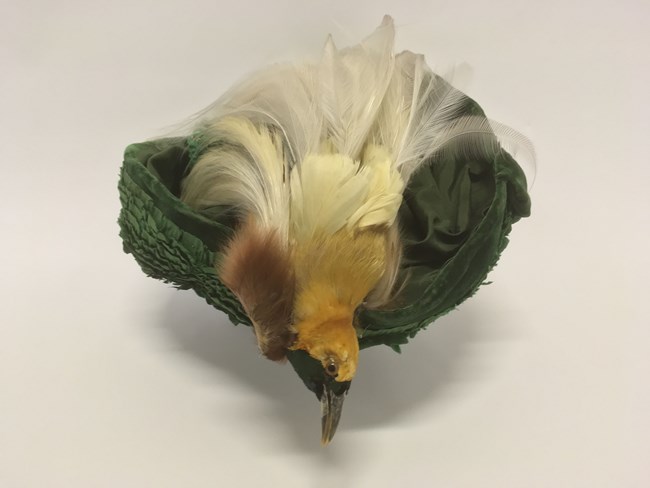
Pacific Grove Museum of Natural History
Although it was more common to see bird plumes used for decorative hats, there were hats where the entire bird was used. This hat features the Lesser Bird-of-Paradise.
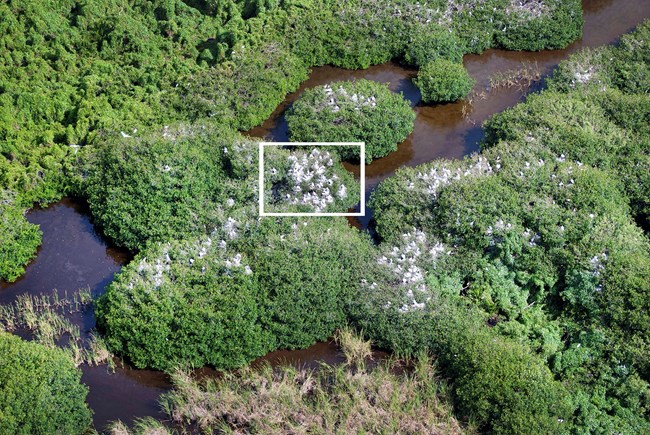
NPS photo, Everglades National Park
Calls for Reform
In 1900, Congress passed the Lacey Act, which prohibited illegal taking and trade of plants and wildlife. Guy Bradley, a warden appointed by the Audubon Society, enforced the Lacey Act to protect rookeries (concentrated bird nests), such as the one shown here.
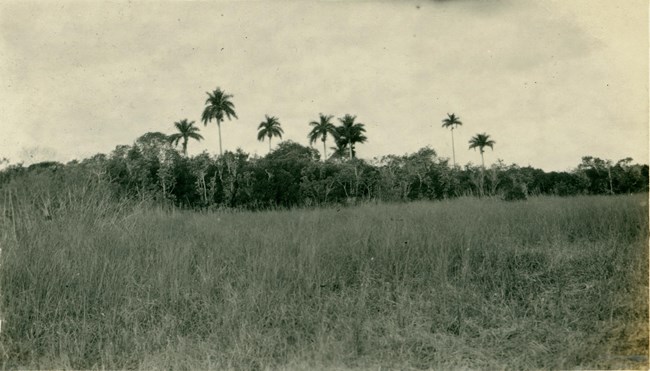
May Mann Jennings Papers, George A. Smathers Libraries, University of Florida (UF00091255-1)
View of Paradise Key showing royal palms. Their presence was a major selling point for the creation of Royal Palm State Park.
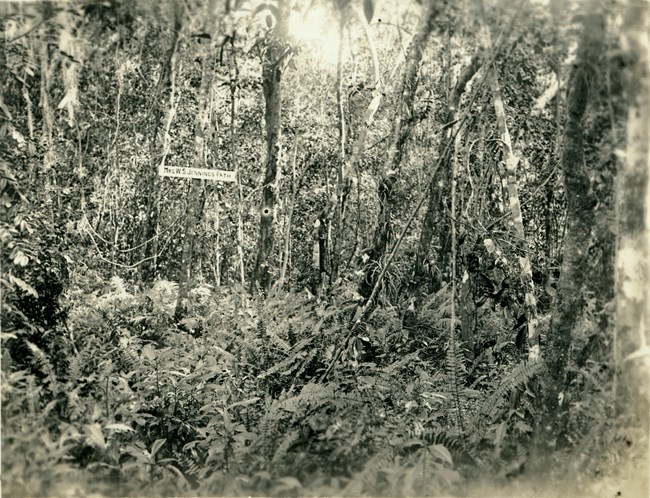
May Mann Jennings Papers, George A. Smathers Libraries, University of Florida (UF00091256-4)
Image of native vegetation in Royal Palm State Park. The sign says “Mrs. W. S. Jennings Path," though not much of a path is visible in the undergrowth!

Historic Homestead Town Hall Museum
Prior to settlement, tropical hardwood hammocks, similar to Paradise Key, were scattered across Dade County. However, Southern Slash Pine forests, as shown in this picture, dominated the landscape.
FROM IDEA TO PARK, WOMEN LED THE WAY
-
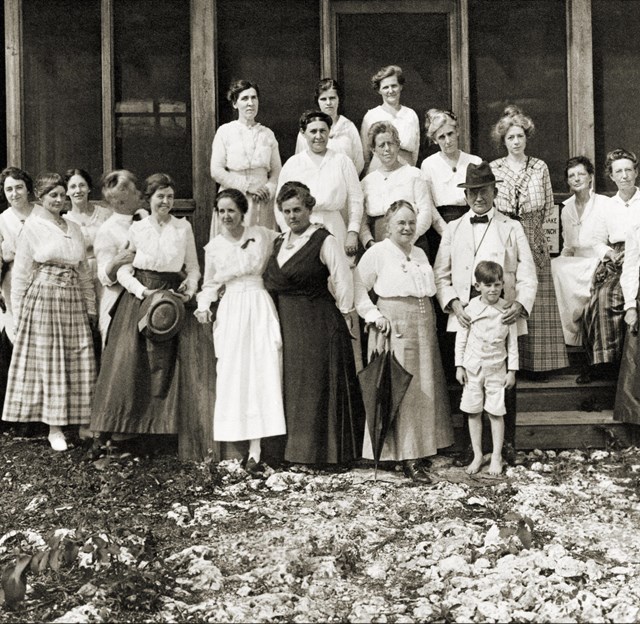 Royal Palm: The Seed for Everglades NP
Royal Palm: The Seed for Everglades NPFlorida women led the effort and owned Royal Palm State Park, created in 1916 and the nucleus for the eventual Everglades National Park.
-
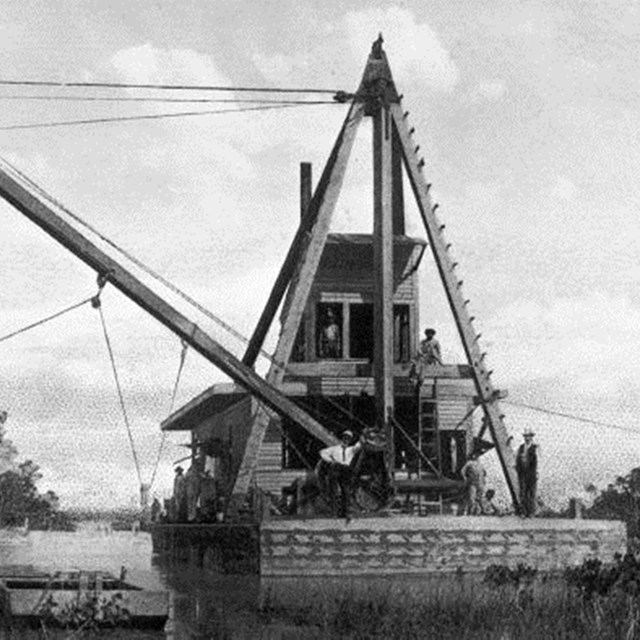 Drain the Swamp
Drain the SwampBefore the park, dredging "reclaimed" the wetlands and provided land for farming.
-
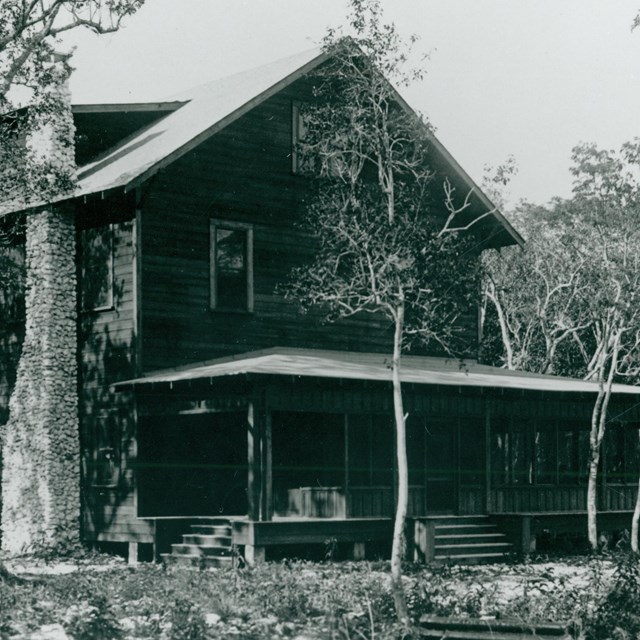 A Dream Come True
A Dream Come TrueThe dream of a state park came true in 1916 and included a park lodge.
Last updated: July 16, 2024
